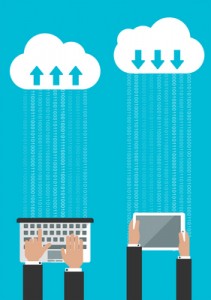
For all too many companies, it’s not until after a breach has occurred that web security becomes a priority.
While more than a few examples of recent breaches may leap to mind, know that these aren’t exclusive to big name retailers who accept credit cards. If you have a website for your business, you may be at risk.
As more and more business is done using the World Wide Web, websites themselves have become increasingly attractive to cybercriminals.
Websites are such a lucrative target for an attack because not only are there so many sites to attack, but an overwhelming majority of all websites can be easily exploited by some of the most common vulnerabilities.
Attackers, no longer driven by notoriety and ideology, have focused more on techniques that allow them to profit from their illegal activities.
Exploited sites allow the theft of credit card data, financial information, identities, intellectual property, and anything else cyber criminals can get their hands on.
The integrity of the company’s internal network can be affected as well if the website provides access to it.
There are many online services that allow anyone to create a webpage in under ten minutes.
Unfortunately, these quick solutions also make it easier for attackers. Without proper training and knowledge, many of these sites are left with multiple vulnerabilities. A few of these vulnerabilities will be discussed.
The Heartbleed Bug is a vulnerability that allows attackers to obtain confidential data such as usernames, passwords, emails, and even proprietary company data and communications.
Even if you think you might be protected because you use encrypted forms of communication, you’re not safe. Attackers will be able to eavesdrop into your communications and steal data from beneath you.
Like Heartbleed, one of the most prominent vulnerabilities affecting web applications is cross site scripting (XSS).
This vulnerability can allow an attacker to hijack web communications. The attacker may target a vulnerable website by tricking the user into submitting sensitive information or performing a privileged action within the target website’s web controls.
Application Denial of Service attacks have rapidly become a commonplace threat for doing business on the Internet — more proof that Web application security is now more critical than ever. Denial of Service attacks can result in significant loss of service, money and reputation for organizations.
Typically, the loss of service is the inability of a particular network service, such as e-mail, to be available or the temporary loss of all network connectivity and services.
Denial of Service attacks are centered on the concept that by overloading a target’s resources, the system will ultimately crash.
An HTTP Denial of Service attack can also destroy programming and files in affected computer systems.
In some cases, HTTP DoS attacks have forced Web sites accessed by millions of people to temporarily cease operation.
Websites that can be compromised pose a serious risk and thus serious preventative measures should be taken to combat it.
Scrambling to fix the problem after the fact is costly, stressful, and can potentially result in legal action. Breaches also cause damage to your company’s image and brand, which may be permanent.
Know your vulnerabilities and don’t rely on ten-minute-or-less website creators to keep you safe.
If it’s too good to be true, it probably is.


 Larger businesses will want to opt for on-site storage with network drives and backup solutions in place. Or they may want to invest in the cloud for a storage. Most medium-to-large scale businesses already have some form of a network server and backup in place, so all that may be needed is additional hard drive space or the creation of folders to house data.
Larger businesses will want to opt for on-site storage with network drives and backup solutions in place. Or they may want to invest in the cloud for a storage. Most medium-to-large scale businesses already have some form of a network server and backup in place, so all that may be needed is additional hard drive space or the creation of folders to house data.
 Today’s workers expect to have 24/7 access to their information. They want to be able to catch up on emails on the evening train ride home or access information while away from the office.
Today’s workers expect to have 24/7 access to their information. They want to be able to catch up on emails on the evening train ride home or access information while away from the office.
